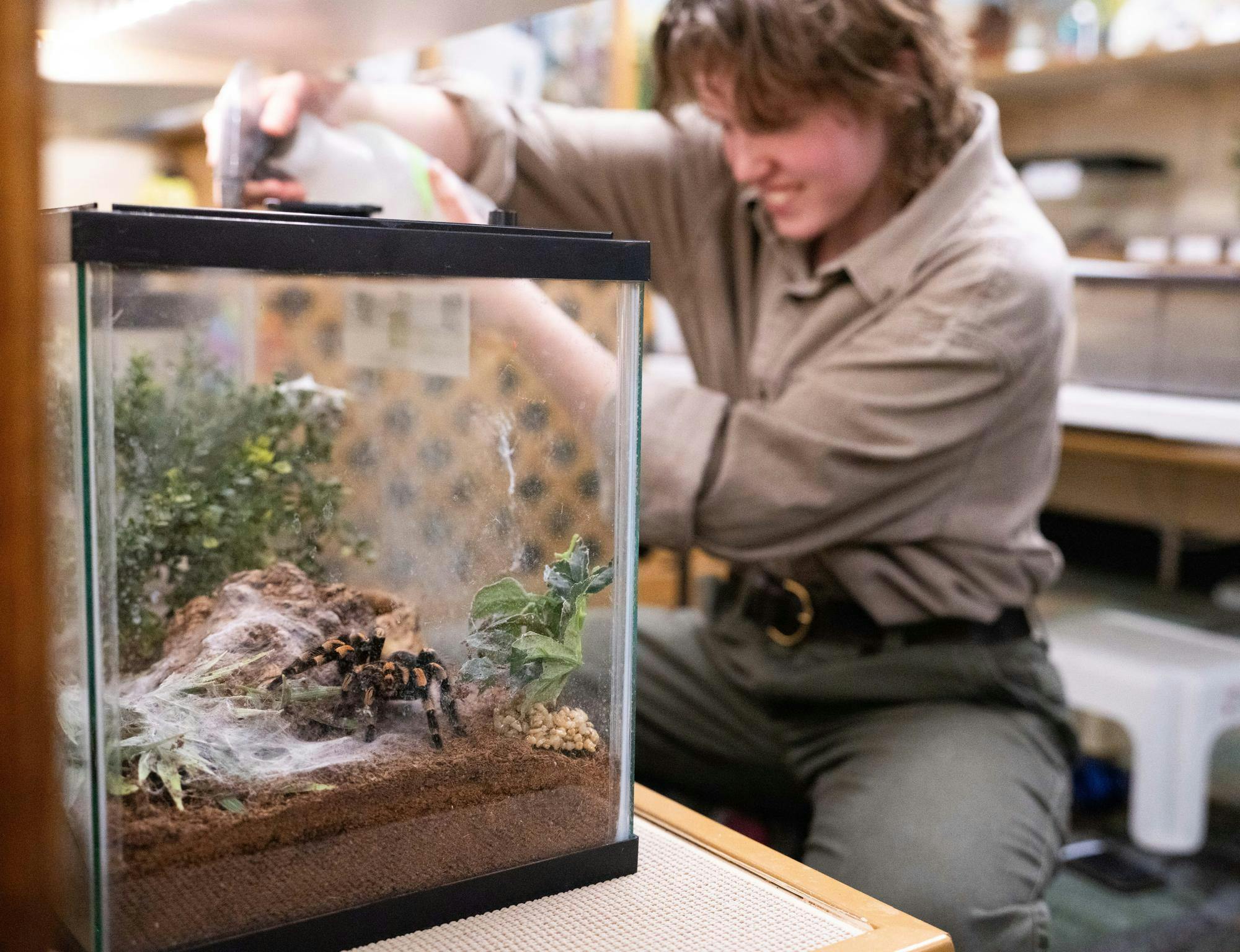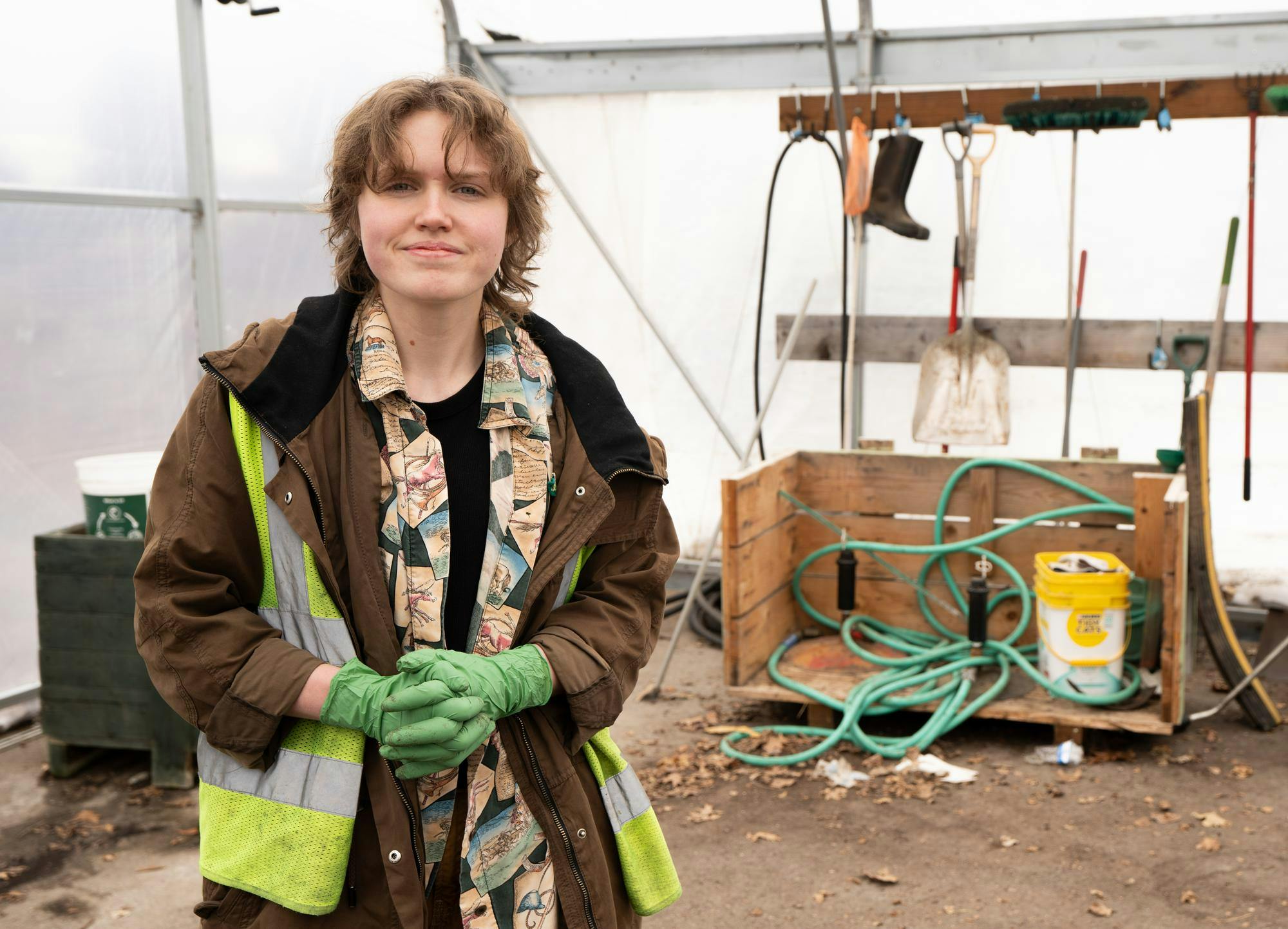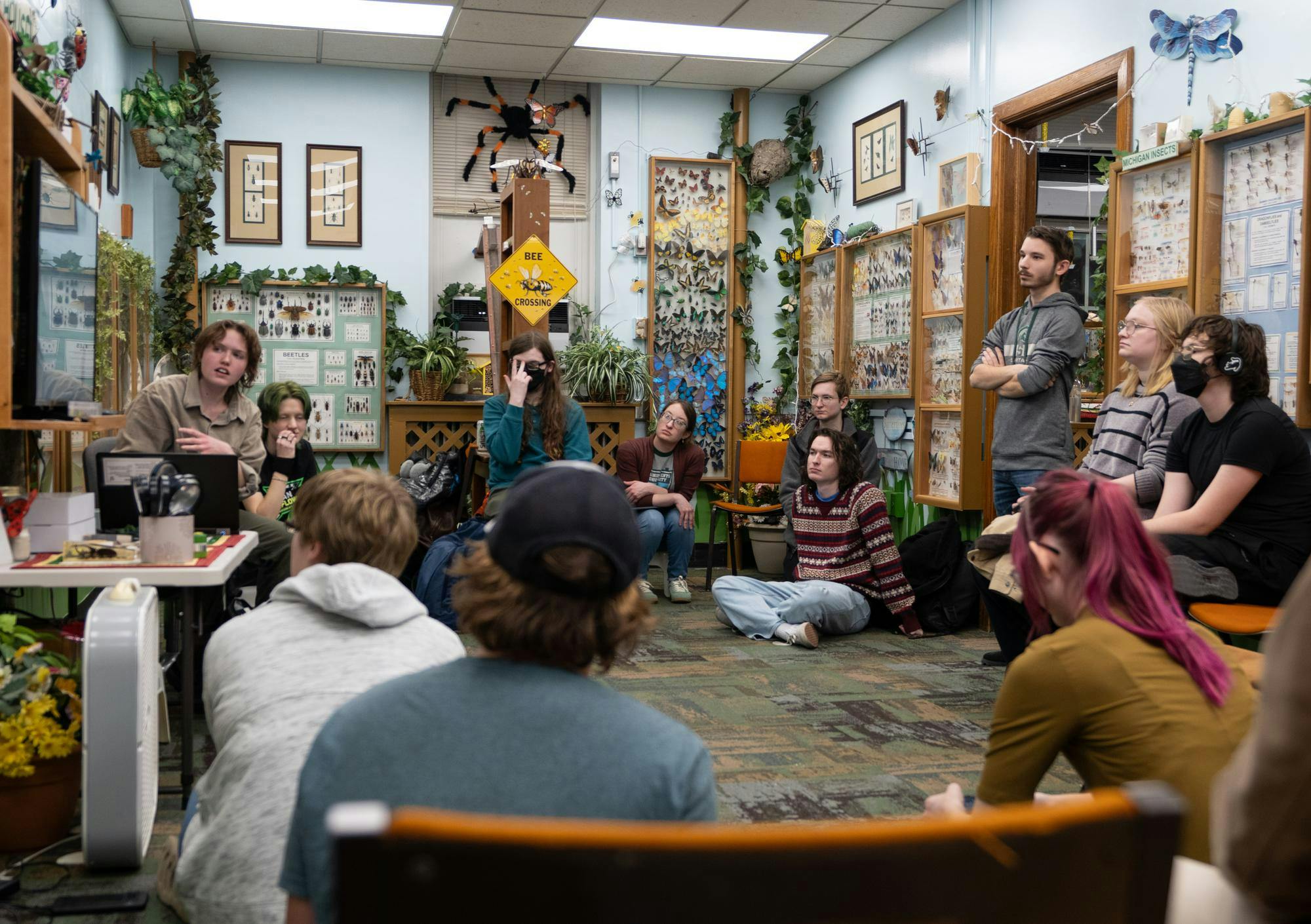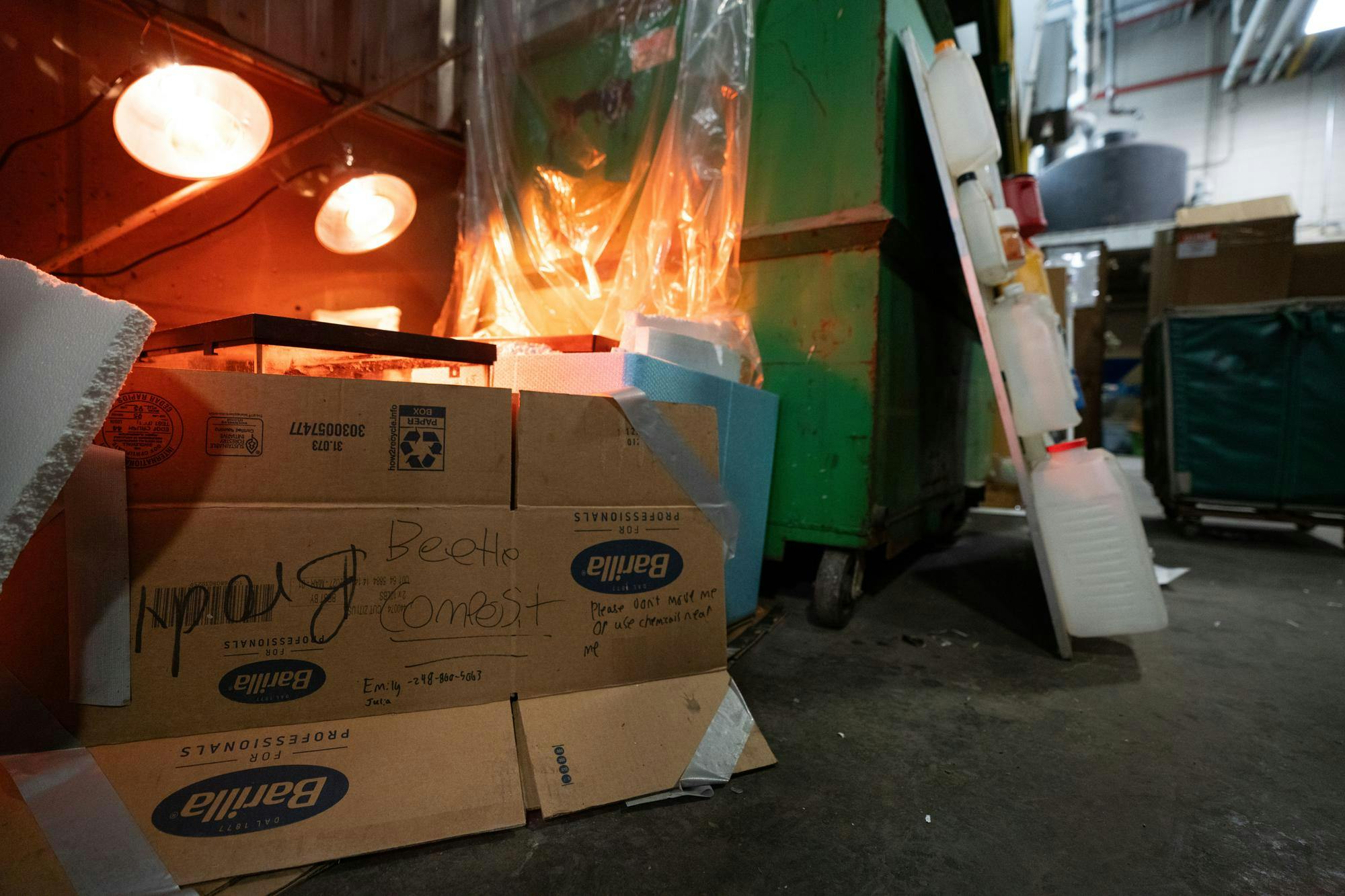Entomology junior E Inch has had their hands in the dirt since they were five years old.
Nowadays, students can find Inch handling arachnids, isopods and insects in the MSU Bug House.

Entomology junior E Inch has had their hands in the dirt since they were five years old.
Nowadays, students can find Inch handling arachnids, isopods and insects in the MSU Bug House.
And it’s not just a hobby. Inch is the caretaker of the small facility, hidden among the Natural Science Building’s laboratories and classrooms. Once they graduate, Inch hopes their research and advocacy work in East Lansing will educate people on how the bugs in their backyard are a big deal for community gardens across the globe.

Inch recalls having a fascination with insects as a child, once bringing an ant-infested stick into their room.
"It was my little at-home ant colony," they said. "It was fun for me, not fun for my mother."
Inch’s interest in bugs continued through high school and into college, where they started volunteering as a Bug House tour guide. It eventually led to a job offer from the facility’s director.
"I did a lot of work with the old animal caretaker," Inch said. "When she left, she had talked to my current boss."
The Bug House is located in room 147 of the Natural Sciences Building. It contains specimen displays in one room and a series of live tanks in the other. Partner organizations across the world regularly donate exotic tarantulas, cockroaches, isopods and more to be studied and presented.

As caretaker, Inch is responsible for keeping the bugs happy and healthy. They clean the enclosures and monitor the larger crawlers for irregular behavior.
Alone in the quiet space during their evenings, Inch said they have come to appreciate the intellect and solitude of the bugs in the facility.
Inch said they have adjusted to the quirks of the job, too. When they put food into the bug tanks each night, the room fills up with a cacophony of eating noises.
"You can hear hundreds of little mouths chewing," Inch said.
Inch is also treasurer of the MSU Bug Club, whose members meet in the Bug House for most of their biweekly Tuesday meetings. Inch and Bug Club’s president, entomology junior JJ Bird, led a presentation at their January meeting on how students in the field can find and secure a summer research position.

"We do all sorts of things here," said Bird.
The Bug House is often closed to the public, with monthly open houses and Bug Club meetings as the exception. The club’s meetings and activities are free, giving all students an opportunity to check out the facility.
In addition to their work at the Bug House, Inch is paid to keep an eye on the worms in the MSU Recycling Center’s vermicompost piles.
A portion of food waste from MSU dining halls is composted, Inch said. Once the nutrient-rich waste has decomposed enough, it is moved into a greenhouse for the center’s population of worms to feast on.
Support student media! Please consider donating to The State News and help fund the future of journalism.
Compared to traditional composting, vermicomposting creates more fertile soil representative of the dirt you would find in a healthy forest, Inch said.

Entomology junior E Inch holds a handful of worm-filled vermicompost at the MSU Recycling Center on Feb 3, 2025. A portion of food waste from MSU dining halls is composted here, Inch said. Once the nutrient-rich waste has decomposed enough, it is moved into the vermicompost greenhouse for the center’s population of worms to feast on.
It’s reflected in the smell, too: compost has an unpleasant odor, while vermicompost smells like dirt, they said.
Buckets of the MSU Recycling Center’s processed vermicompost are available for purchase starting April 7, Inch said.
Once they graduate, Inch wants to apply their love and knowledge of bugs to the study of how they can be used in community gardens. Tucked in the corner of the Recycling Center’s main processing facility lies their "pet project" to answer a question: Do beetles process chemicals from grocery store meat that are toxic to worms?
If their prediction is right, Inch believes there could be significant implications for vermicomposting. Beetles could be used in the process to digest meat before worms, they said, giving products that comprise 30% of U.S. food waste another path to avoid the landfill.
The project isn’t yet a proper experiment, but Inch said it’s an ambition they hope to explore in a lab.

For now, Inch spends their days taking care of what they believe to be an "underappreciated" part of the animal kingdom.
"Bugs and worms — they’re decomposers. They connect life and death," Inch said.
For students interested in seeing the Bug House in the evenings, Inch said they have an offer:
"If the lights are on and the door is open, people are free to come in."

Students gather inside the MSU Bug House during Bug Club's bi-monthly meeting on Jan. 28, 2025. The facility is on the first floor of the Natural Science Building and opens to the public on the second Monday of each month from 5:30 to 7:30 p.m.